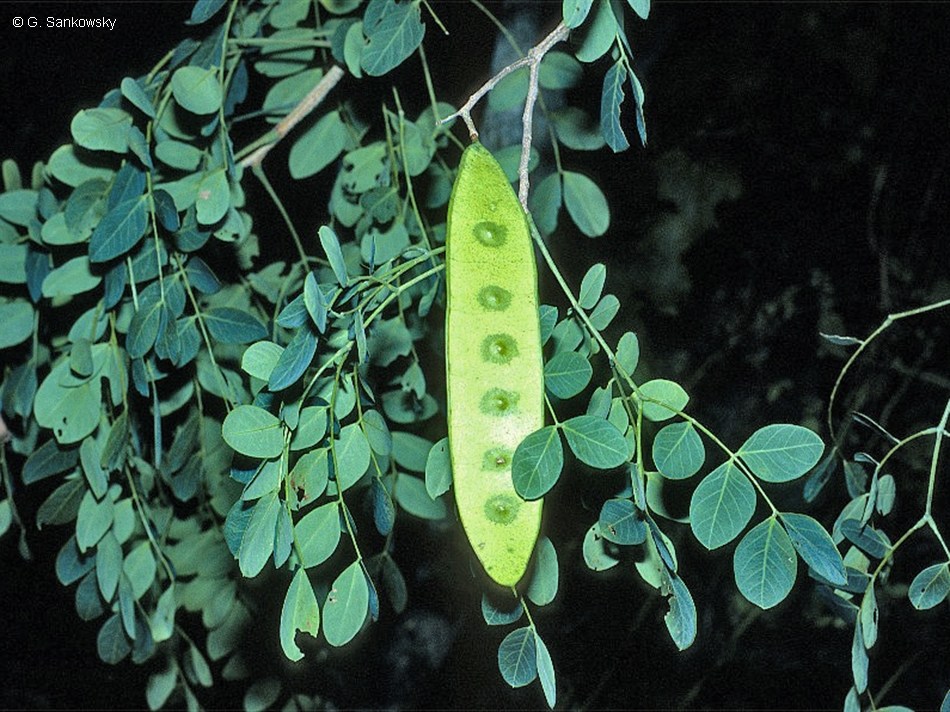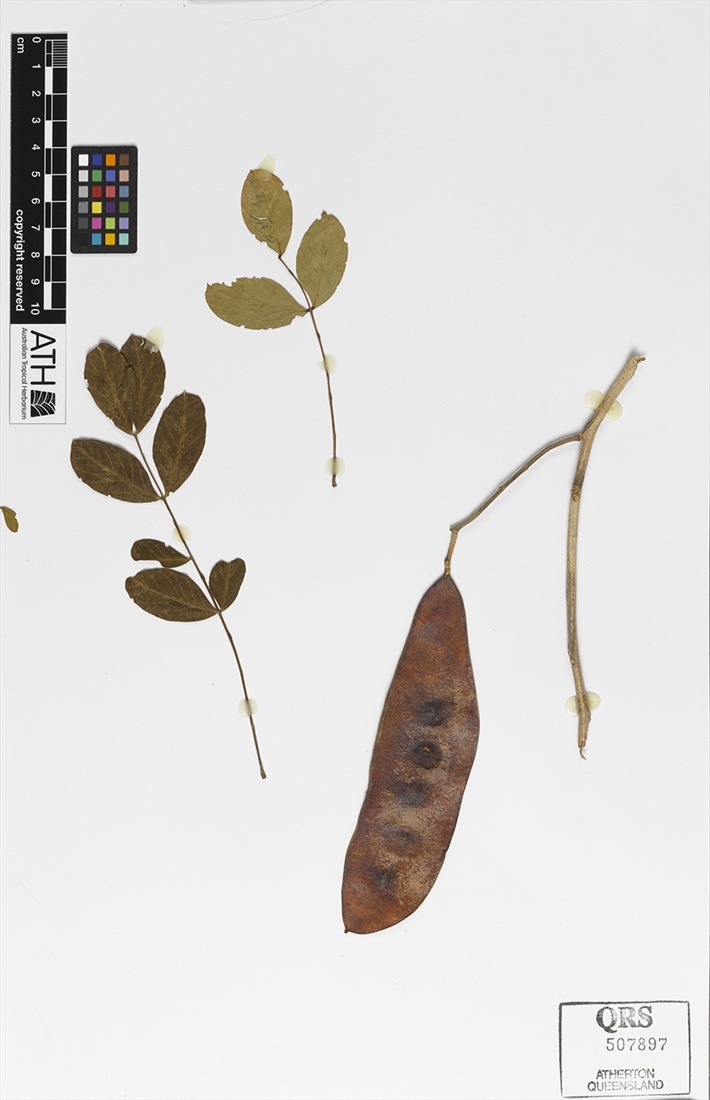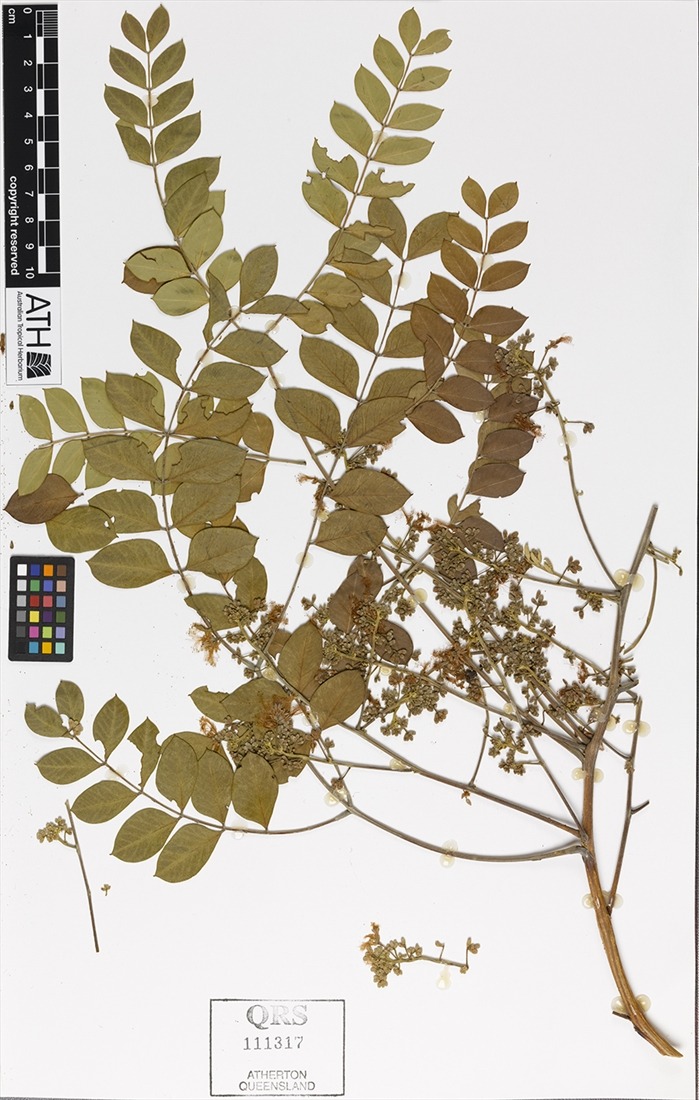Australian Tropical Rainforest Plants - Online edition
Albizia canescens Benth.




Bentham, G. (1864), Flora Australiensis 2: 423. Type: Queensland. Burdekin river, F. Mueller; Fitzroy and Bowen rivers, Bowman; Rockhampton, Thozet, Dallachy.
Usually grows into a small tree 3 to 10 m tall. Bark yellowish to pale or dark grey, deeply furrowed, becoming corky.
Leaves compound, alternate, bipinnate, 2-3 pairs of pinnae per leaf, (3-) 5-9 pairs of leaflets per pinnae. Twigs, petioles and both the upper and lower surfaces of the leaflet blades clothed in short, white, appressed hairs. Petioles and compound leaf rhachis grooved on the upper surface. A raised gland usually present on the upper surface of the compound leaf petiole almost halfway along its length. Similar, smaller glands present on the upper surface of the secondary axes between some pairs of pinnae and between some leaflet pairs. Stipules caducous; two pubescent scales present above the pulvinus at the base of the secondary rachis; leaflet stalks about 0.1-0.2 cm long. Leaflet blades about 2-5 cm long, 0.8-3.5 cm wide, ± asymmetrically elliptic, oval or oblong, rarely obovate, base rounded or truncate, margin entire, apex mucronate. Leaves discolorous when dried, but mildly so cf. dry material of Albizia procera.
Inflorescence axillary, terminal, not exceeding the leaves; paniculate, with numerous peduncles bearing 4-7 flowers in terminal bundles; peduncles often fasiculate, with new bundles arising from base of older peduncles. Individual flowers sessile or shortly stalked. Outer surface of the calyx and the petals clothed in white or pale appressed hairs. Flowers 5-merous (very rarely 4 or 6). Calyx fused for more than half their length, 1.5-3 mm long, cream-green. Petals about 3-7 mm long, fused for about half their length, cream-green. Stamens about 25, filaments to 15 mm long, mainly free for upper half, and fused in lower half to form a staminal tube; shortly fused to corolla tube at very base.
Pods flat, to 29 cm long, 3-5 cm wide. Seeds about 9-10 per fruit. Seeds about 7.5-10 mm diameter.
Cotyledons thick, cordate at the base, radicle short and thick.
Occurs in WA, NT, NEQ, CEQ and southwards as far as south eastern Queensland. Altitudinal range in northern Australia from near sea level to 400 m. Usually grows in open forest but sometimes found in monsoon forest and vine thickets.
Albizia plurijuga Domin. Bibliotheca Botanica 22 (89): 828 (1926). Type: "Nord-Queensland: in den Savannenwäldern bei Calcifer (im Chillagoe-Distrikte schone Baume mit mächtiger, brauner, rissinger, an "Ironbark" erinnernder Rinde (DOMIN II. 1910)." Lectotype: Queensland, in den Savannenwaldern bei Calcifar (im Chillagoe-Distrikte), February 1910, K. Domin 5416 (PR). Cowan, R.S. (1996), Notes on miscellaneous mimosoid legumes (Leguminosae: Mimosoideae), mostly Australian. Nuytsia 11(1): 12.
1199





